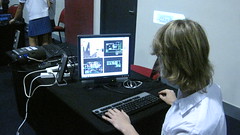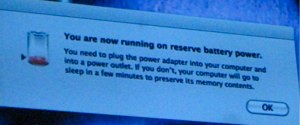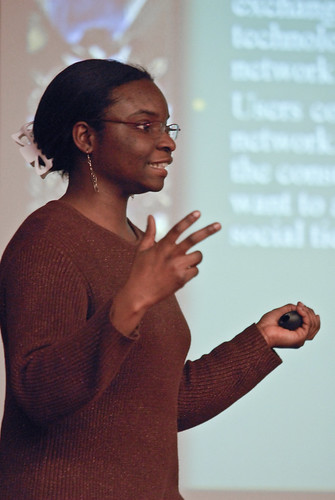That’s what a workshop participant said about my contact for some recent work I did here in North Carolina — a client school district I personally care a lot about (think Barney Fife). They’d originally contacted me about doing a workshop for their staff development team on integrating Web 2.0 applications into the curriculum, looking for best-practice examples that they could take forward to the teachers they serve. I declined!
Now I’ve said from time to time that one of the perks of “trying to make a living without a job” is that I can pick and choose from among the jobs I’m asked to do. To be honest, the number of times I’ve declined a job could be counted with the fingers of one hand, leaving me enough for a cub scout salute — and a free thumb for for balance. But I did it that day, because I have become increasingly uncomfortable about going out and teaching something — telling teachers (or staff developers) here is what you should do and here’s how.
Something about giving a guy a fish comes to mind.

Now it’s not that I disapprove of teaching something. Some things need to be taught and some contexts require it. It was appropriate to teach teachers what a blog was, a couple of years ago, and to suggest how students’ blogging might result in more effective, reflective, and constructive writing. However, any teacher who doesn’t know what blogging is now, has left their classroom door shut too long.
So the district called me again a few weeks later, saying that they wanted to rent two afternoons of my time, and what could I do that would help their staff developers support teachers in using Web 2.0 applications. So I told him about the conversation I facilitated at EduCon a few months ago, using a yet-to-be-named idea plotting tool, and how this “unconference” approach was designed to help educators understand the fundaments of Web 2.0 applications (or whatever) and to discover or invent ways of using the tools to facilitate high order learning.
Long story-short, I was bowled over by the ideas that the educators came up with when they were working together to boost traditional learning activities up Bloom’s (revised) Taxonomy, springboarding off some of the qualities of the tech-infused classroom (Technology-Transformed Learning Environments). You can read more about the process here (My Educon Conversation).
We ended the afternoon with a meeting to map out my second afternoon with them, and it was mentioned how uncharacteristic it was for my contact to be so hyper at 3:00 in the afternoon. I walked away with a heightened belief that teachers and teaching are an isolated and insulated experience — that we find a way to teach something and then do it the same way for 30 years — and this is a huge barrier to retooling classrooms. Educators desperately need the resources, the avenues, and the time to re-invent themselves in collaborative conversations and that this needs to be an assumed route in our “Race to the…” future.










 I’ve been looking for a way to caricature myself, so this caught my attention, and I clicked over to
I’ve been looking for a way to caricature myself, so this caught my attention, and I clicked over to